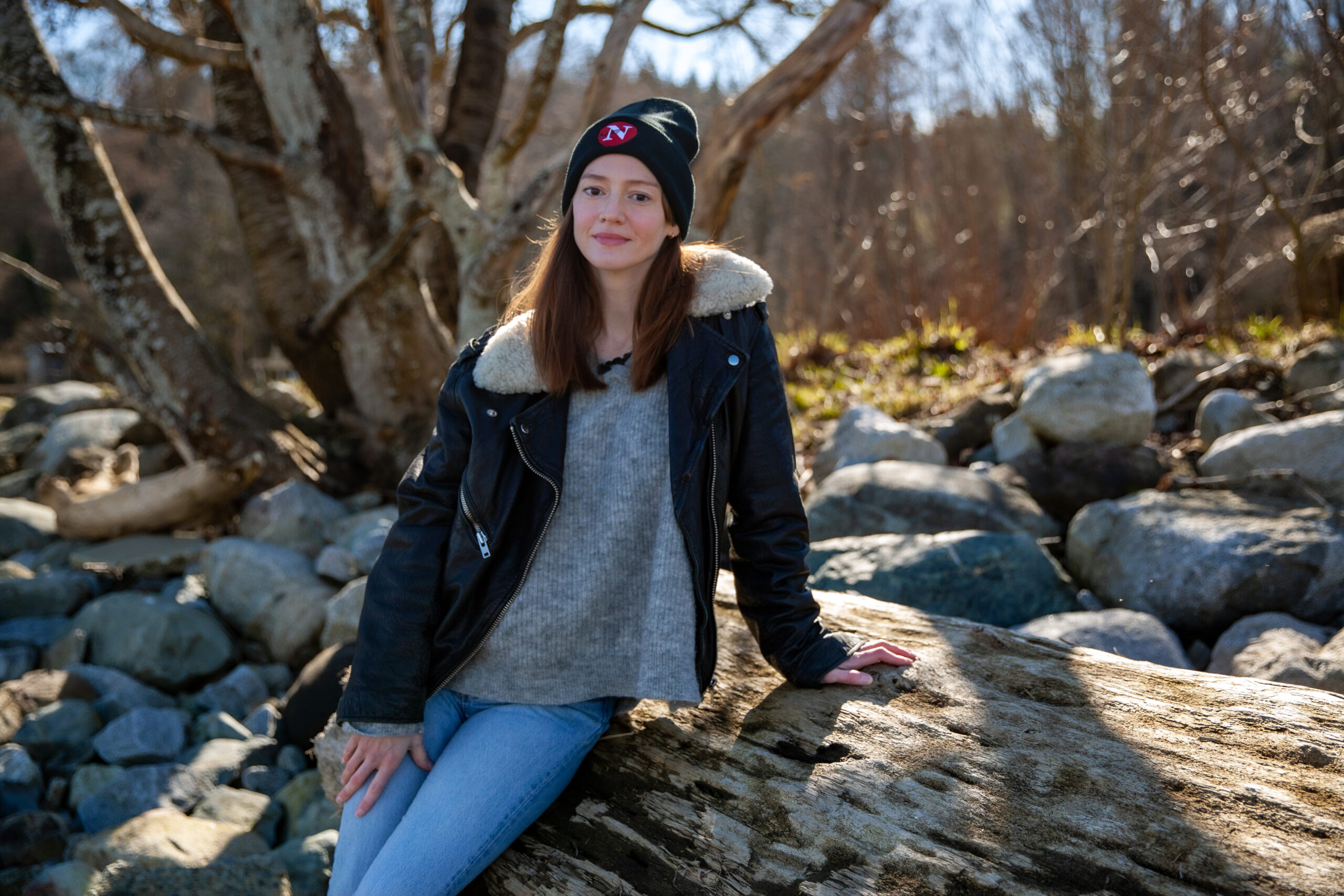
Rocky Mountain coal mine in Alberta takes next step to expansion
In Alberta, a massive open-pit coal mine near Jasper National Park is hoping to expand...
As a self-described professional reader, it’s nearly impossible for Michelle Cyca to choose her favourite book. But, if pushed, she will tell you it’s anything by Ali Smith. “She’s a Scottish author who writes the most beautiful, strange, unexpected novels about art, empathy and the natural world, and her most recent one is Companion Piece,” Michelle says.
Michelle’s deep love for reading and writing is just part of why we’re excited to welcome her to The Narwhal pod. She’s joining the team as an editor focused on expanding our coverage of Indigenous-led conservation.
“What’s thrilling about Indigenous-led conservation is seeing how fundamentally different the approaches are, because they’re rooted in Indigenous laws and governance, and because they’re specific to the context and history of each Indigenous nation,” Michelle says.
In her new role, Michelle is starting by reaching out to as many people as she can to hear their thoughts on what kind of stories need to be told. When she’s not doing that she’ll be juggling a robust roster of freelance projects, taking care of her cat, Azzy, and parenting — it’s the latter that inspires her most.
“Becoming a parent has been the most clarifying experience for understanding my values and how I want to spend my time,” she says.
I spoke with Michelle about her journey to journalism, what keeps her up at night and what she’s looking forward to in this new role.
It was definitely a circuitous path — I always loved writing but I wasn’t sure I could make a career out of it. I studied public health and worked in health promotion and outreach for a few years, which made me realize two things: the part of my work I was most interested in was figuring out how to communicate information in clear, accessible and compelling ways; and that there was a huge scientific literacy gap that can be addressed, in part, through journalism.
As a Cree person, I also found a lot of the journalism on Indigenous issues really disappointing. Often it was so focused on trauma, in ways that felt exploitative or two-dimensional, or it was so superficial and there was no engagement with contemporary issues, cultural nuance or political complexity. It didn’t reflect the lives of the Indigenous people I knew or the work they did. I’m an Aries so my general approach in life is that if I see something being done poorly I want to get in there and do it myself.
How powerful it is! This is truer now than ever — there’s so much noise and “content” that I think thoughtful, deliberate storytelling is even more critical. A lot of the public understanding of reconciliation and Indigenous Rights has come about through people finally hearing Indigenous stories and perspectives, for instance. And I find it most gratifying when someone reaches out to me to say that they felt seen or understood by something I wrote.

I think in the last few years it’s become especially obvious that the Canadian government cannot fix the problems they have created for Indigenous people. For a long time, reconciliation strategies felt very patronizing — we’re sorry about everything, and we’re going to do something to make up for it. This is doomed to fail because, often, the interests of the government run counter to the interests of Indigenous people — we see this in clashes over resource extraction at the expense of environmental destruction.
I think that Indigenous-led conservation opens up discussions and facilitates learning about the broader context of Indigenous Rights and sovereignty. More people than ever are concerned about the environment and the climate crisis. They realize that defending the natural world is critical to our survival, and part of that work is recognizing and affirming the stewardship of Indigenous people over their lands and waters. For Indigenous people, rights and land and identity are all bound up together — you can’t protect the environment separate from the people who live on it. So I hope that people who are drawn to these fights out of concern for the planet will also recognize that they need to be allies in a larger struggle for Indigenous self-determination and survival.
I love stories about young land and water defenders — as much as this important work is being led by elected and hereditary leaders, there are a ton of incredible young Indigenous folks whose efforts deserve attention.
For someone with zero natural athletic talents I’m surprisingly good at chopping wood, and if you have a wood pile I will absolutely demolish it for you.
My cat, the slow and steady erosion of Indigenous Rights, the discovery of this asteroid that might hit earth in 23 years.
I love hearing from Indigenous people who are working in their communities, and I encourage them to think of what they do as newsworthy! One problem arising from the underrepresentation of Indigenous stories in media is that it can deter people from thinking that what’s happening in their community is worth covering. If you’re wondering, “Why hasn’t anyone written about what’s happening on our territory?” that’s a sign you should send me an email!
Michelle Cyca is an editor at The Narwhal focused on Indigenous-led conservation, you can reach her at michelle@thenarwhal.ca. This conversation was edited for length and clarity.
Get the inside scoop on The Narwhal’s environment and climate reporting by signing up for our free newsletter. A $335 million funding commitment to fund...
Continue reading
In Alberta, a massive open-pit coal mine near Jasper National Park is hoping to expand...

A trade war could help remake B.C.’s food system, but will family farmers be left...

First Nations are leading efforts to make sure lake sturgeon can find a home in...
